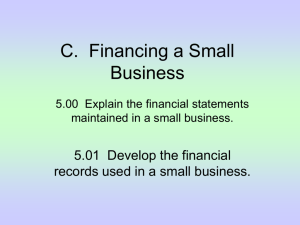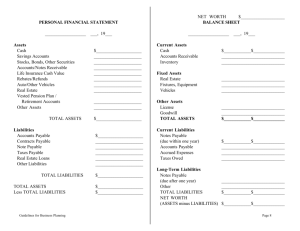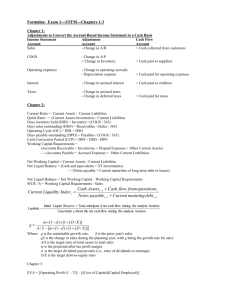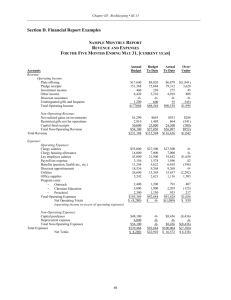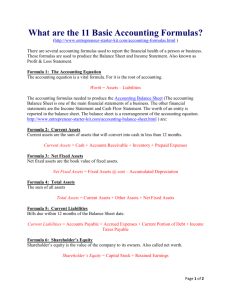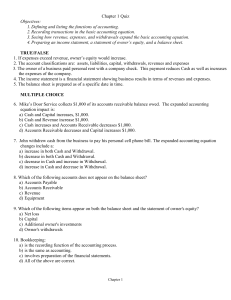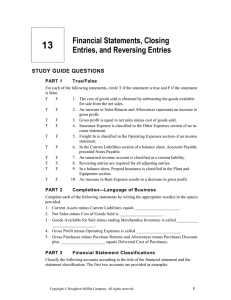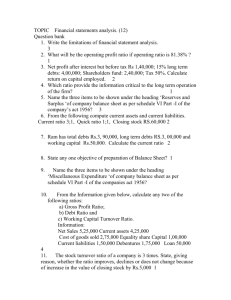Balance Sheet Glossary of Terms
advertisement
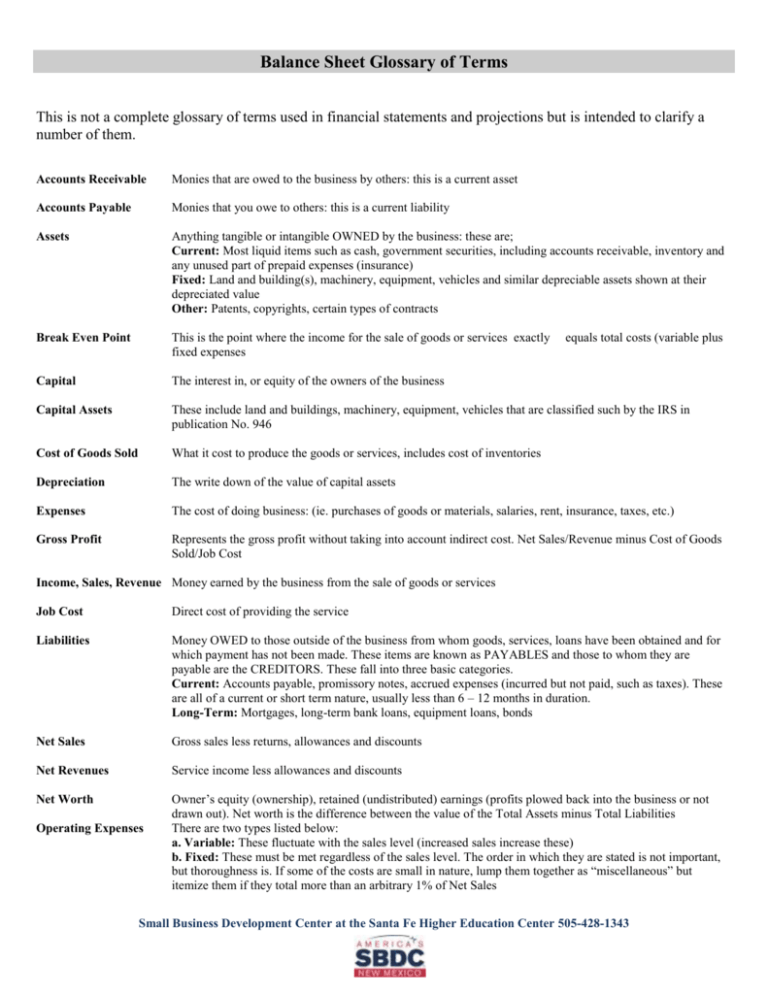
Balance Sheet Glossary of Terms This is not a complete glossary of terms used in financial statements and projections but is intended to clarify a number of them. Accounts Receivable Monies that are owed to the business by others: this is a current asset Accounts Payable Monies that you owe to others: this is a current liability Assets Anything tangible or intangible OWNED by the business: these are; Current: Most liquid items such as cash, government securities, including accounts receivable, inventory and any unused part of prepaid expenses (insurance) Fixed: Land and building(s), machinery, equipment, vehicles and similar depreciable assets shown at their depreciated value Other: Patents, copyrights, certain types of contracts Break Even Point This is the point where the income for the sale of goods or services exactly fixed expenses Capital The interest in, or equity of the owners of the business Capital Assets These include land and buildings, machinery, equipment, vehicles that are classified such by the IRS in publication No. 946 Cost of Goods Sold What it cost to produce the goods or services, includes cost of inventories Depreciation The write down of the value of capital assets Expenses The cost of doing business: (ie. purchases of goods or materials, salaries, rent, insurance, taxes, etc.) Gross Profit Represents the gross profit without taking into account indirect cost. Net Sales/Revenue minus Cost of Goods Sold/Job Cost equals total costs (variable plus Income, Sales, Revenue Money earned by the business from the sale of goods or services Job Cost Direct cost of providing the service Liabilities Money OWED to those outside of the business from whom goods, services, loans have been obtained and for which payment has not been made. These items are known as PAYABLES and those to whom they are payable are the CREDITORS. These fall into three basic categories. Current: Accounts payable, promissory notes, accrued expenses (incurred but not paid, such as taxes). These are all of a current or short term nature, usually less than 6 – 12 months in duration. Long-Term: Mortgages, long-term bank loans, equipment loans, bonds Net Sales Gross sales less returns, allowances and discounts Net Revenues Service income less allowances and discounts Net Worth Owner’s equity (ownership), retained (undistributed) earnings (profits plowed back into the business or not drawn out). Net worth is the difference between the value of the Total Assets minus Total Liabilities There are two types listed below: a. Variable: These fluctuate with the sales level (increased sales increase these) b. Fixed: These must be met regardless of the sales level. The order in which they are stated is not important, but thoroughness is. If some of the costs are small in nature, lump them together as “miscellaneous” but itemize them if they total more than an arbitrary 1% of Net Sales Operating Expenses Small Business Development Center at the Santa Fe Higher Education Center 505-428-1343 Pre-Tax Profit (Loss) Depending on the legal structure of the business, this is the tax base or figure on which the taxes will be calculated. This is Gross Profit minus Total Expenses. Ratios Many lenders use ratios in evaluating the projected and ongoing balance sheets. The two most commonly used are; Current Ratio: which measures the liquidity of the business, it’s ability to meet current obligations (those due during the course of the year). It is calculated by dividing Current Assets by Current Liabilities. Some lenders like to see a current ratio of 2.0 or greater. To be meaningful, you need to know inventory composition, age of accounts receivable and the true value of current assets and liabilities Quick Ratio: This calculated by dividing the most liquid assets (cash, securities, and possibly current Accounts Receivable) by Current Liabilities. By rule of thumb this should be greater than 1.0 Total Expenses This is the sum of variable and fixed expenses Small Business Development Center at the Santa Fe Higher Education Center 505-428-1343

